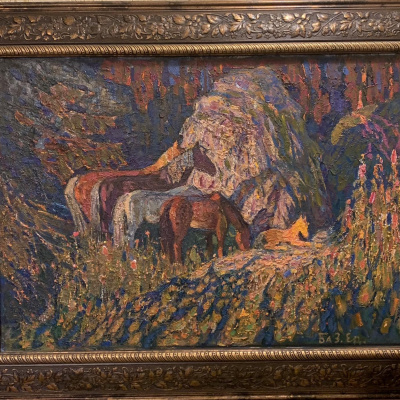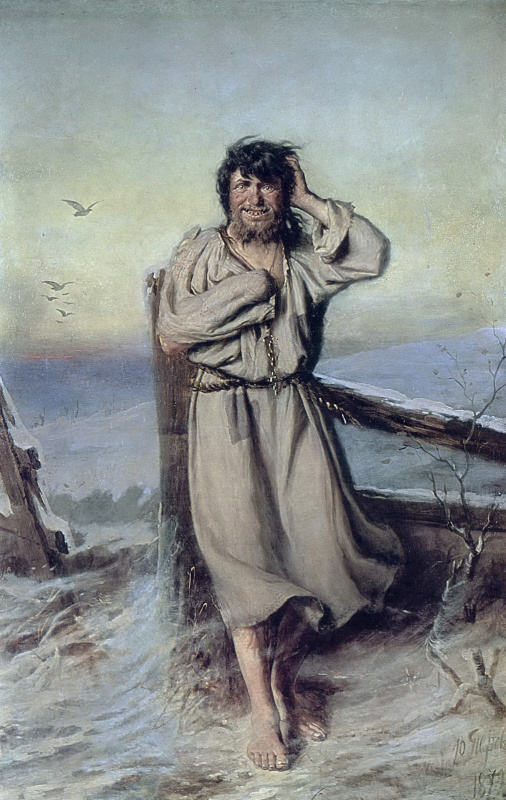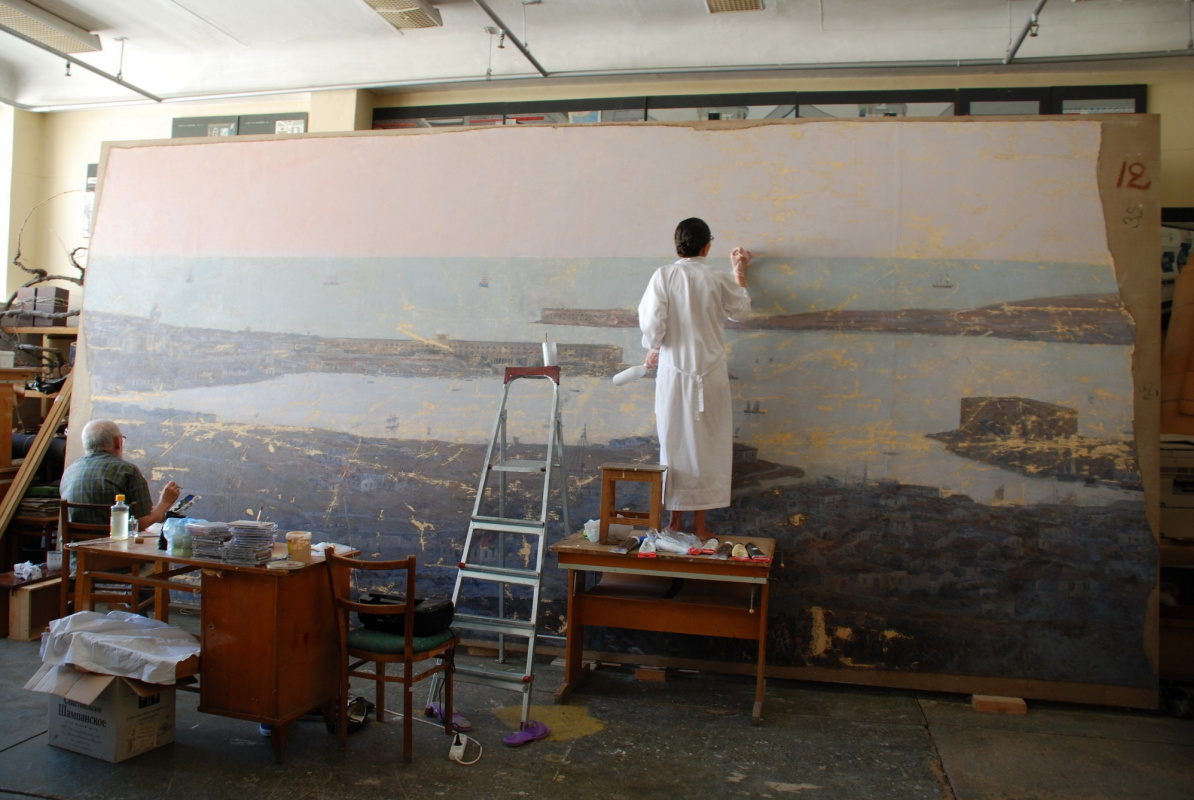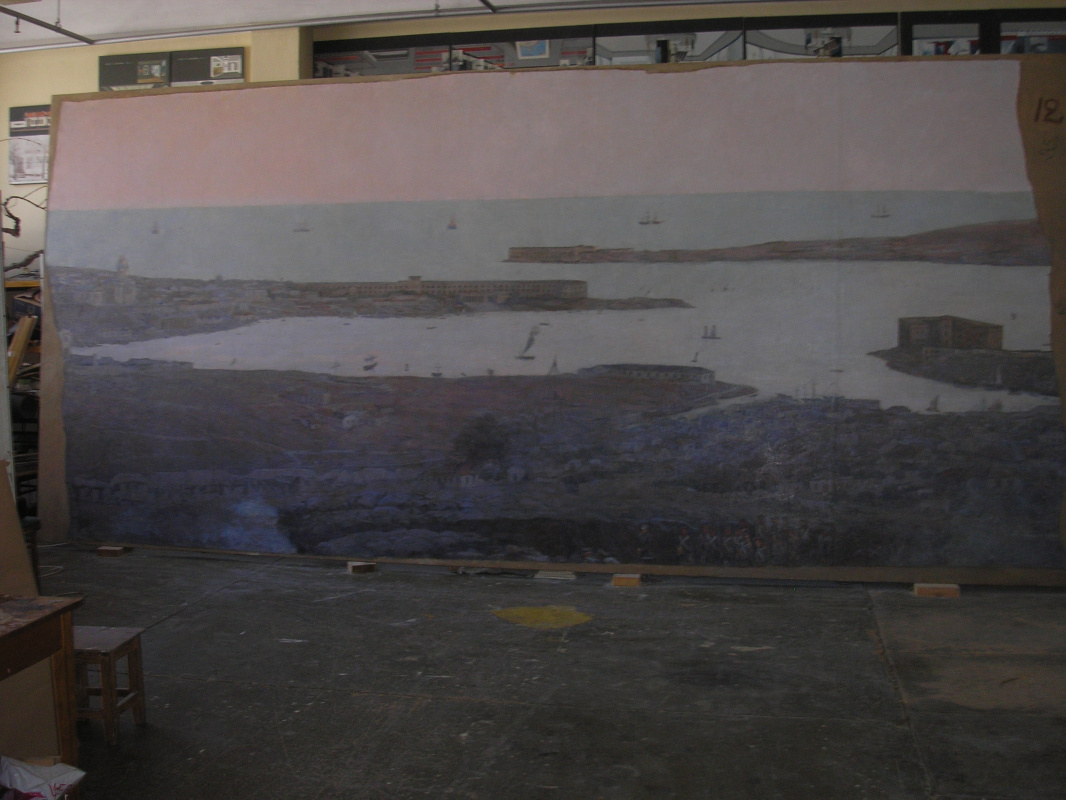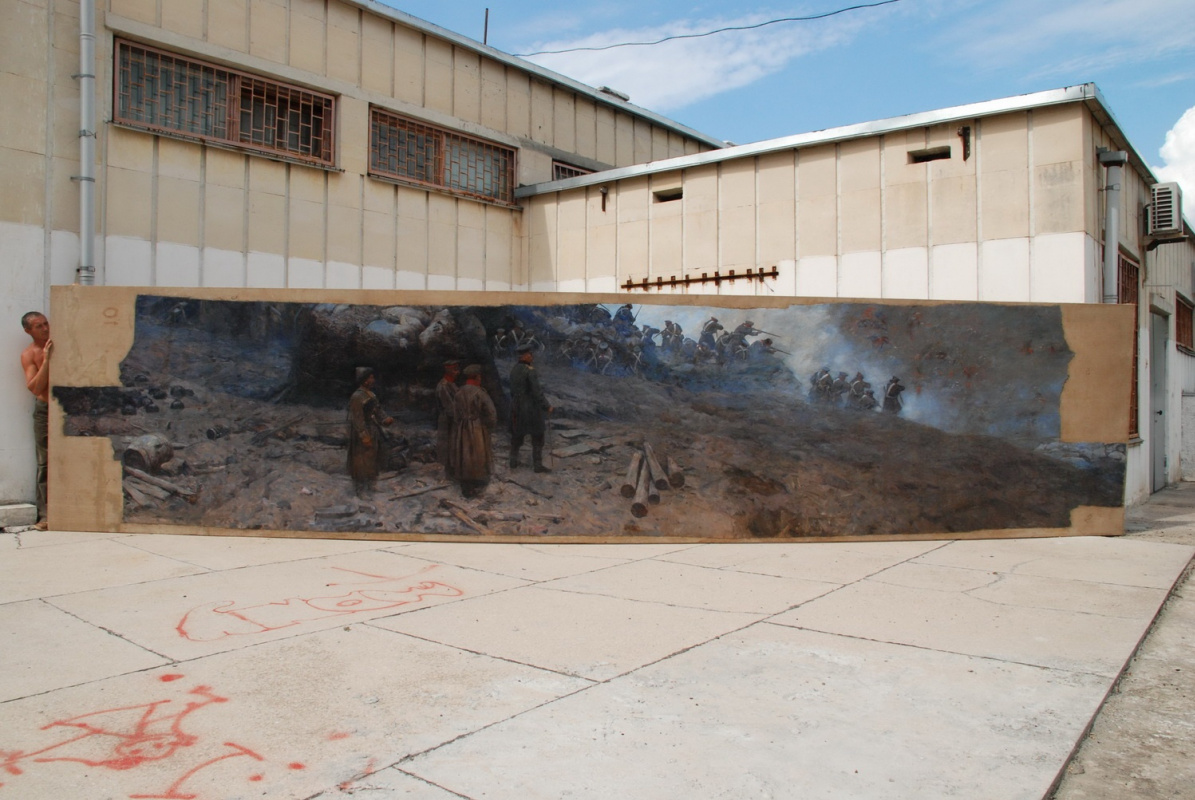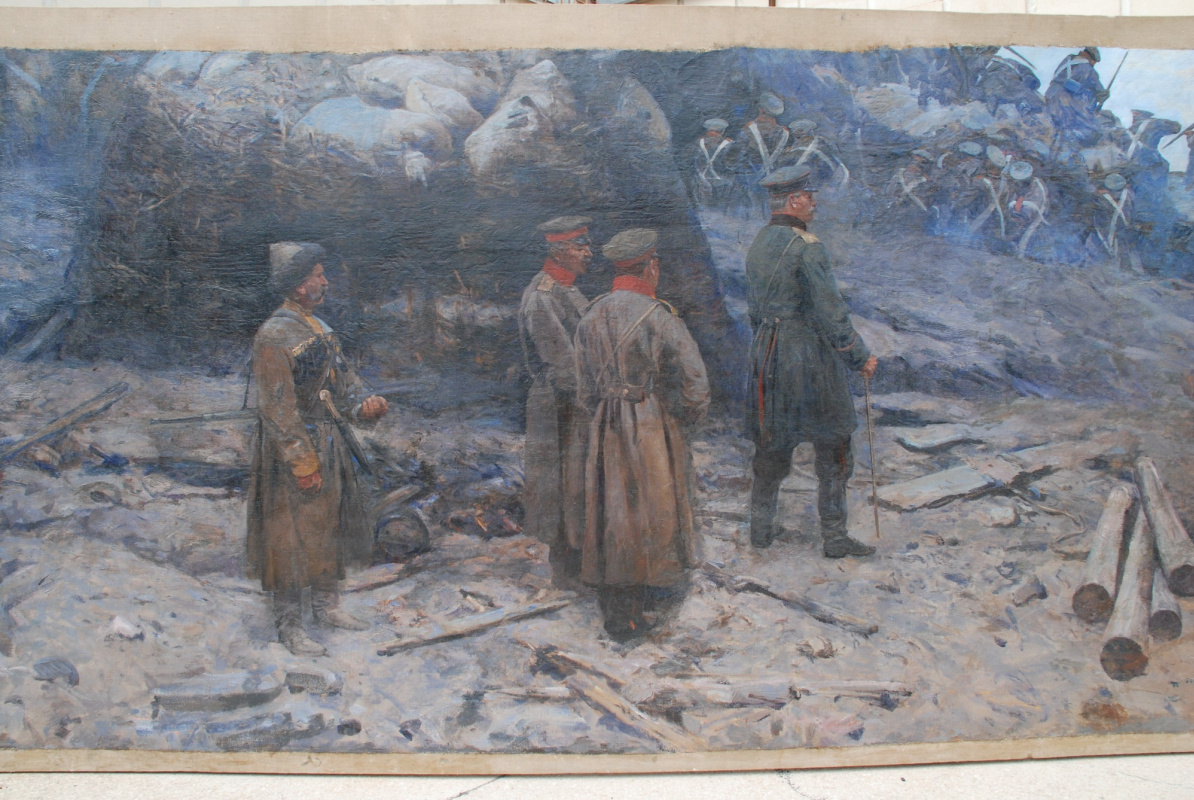The attitude towards the preservation and restoration of works of art wasn’t unambiguous sometimes. So, in the Renaissance
, the monuments of antiquity were carefully preserved and restored, while the artworks of the Middle Ages weren’t cherished at all, they even destroyed them! We were told about the modern approach to restoration at the National Research Restoration Centre of Ukraine.
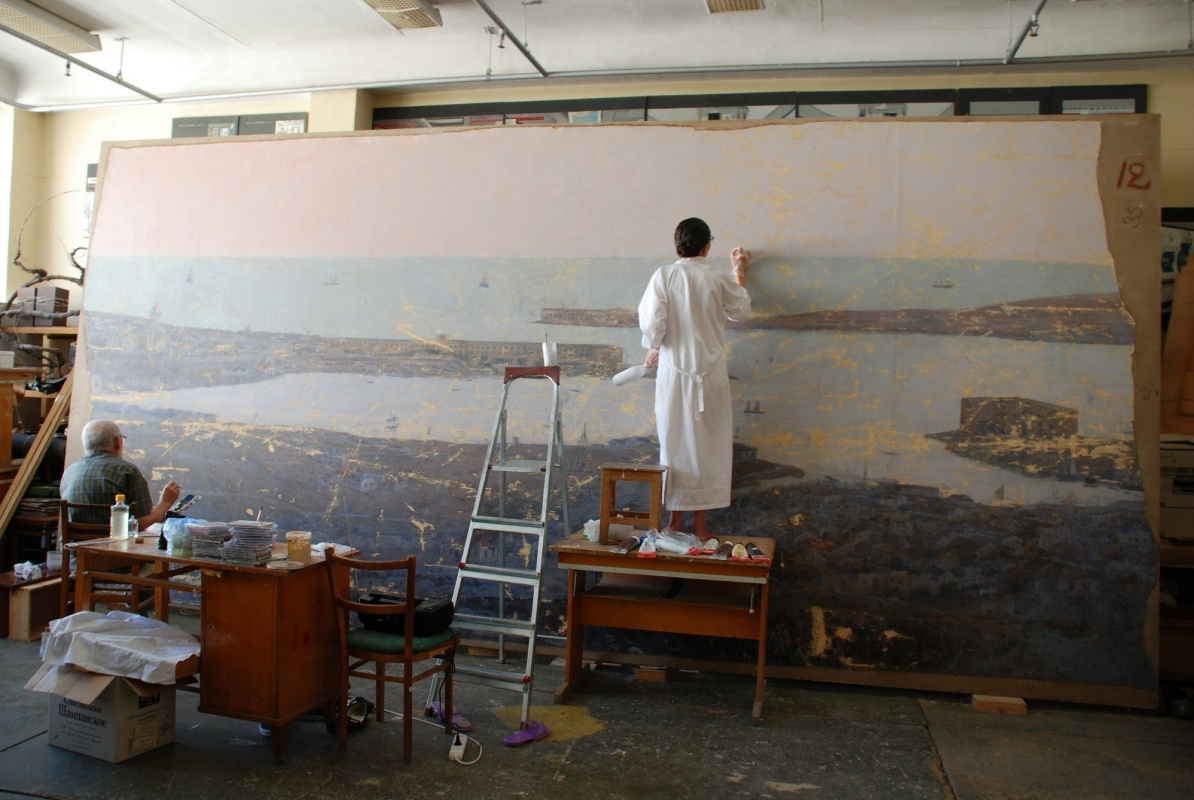
In our days, the international community has developed stable views on restoration processes, and the specialists follow the approved basic rules and methods. A collector who faces the problem of restoration sooner or later would find it useful to learn more about them.
With our questions, we turned to the most authoritative source in Ukraine — the National Research Restoration Centre of Ukraine. The Executive Director and Honoured Worker of Culture, Svitlana Oleksandrivna Strelnikova told us about the work of the centre:
"Our centre is the country’s oldest one, it has been operating for over 75 years. Its main activity is connected with orders from Ukrainian state museums for the restoration of painting, sculpture, arts and crafts. We also provide restoration services to private collectors."
"Our centre is the country’s oldest one, it has been operating for over 75 years. Its main activity is connected with orders from Ukrainian state museums for the restoration of painting, sculpture, arts and crafts. We also provide restoration services to private collectors."
The Deputy Executive Director for scientific restoration work, master-level oil fine art restorer, Honoured Restorer of Ukraine, Tetiana Anatoliivna Bychko told us about the problems the art collectors face.
"Tetiana Anatoliivna, what problems do you face most often when restoring paintings?"
"Before the emergence of the restorer profession, artists restored pictures. They used completely different principles and methods. The icons and paintings were restored improperly. They were overpainted and refreshed… Icons could be re-painted dramatically. There have been cases when artists restoring an icon with one subject painted a completely different subject over it. And the problem is that today many of the paintings and icons brought to us were previously restored in such an unprofessional way."
"Before the emergence of the restorer profession, artists restored pictures. They used completely different principles and methods. The icons and paintings were restored improperly. They were overpainted and refreshed… Icons could be re-painted dramatically. There have been cases when artists restoring an icon with one subject painted a completely different subject over it. And the problem is that today many of the paintings and icons brought to us were previously restored in such an unprofessional way."
"What methods are used by restorers at your centre?"
"I cannot answer this question. I don’t want anyone to take my answer as a dogma. It so happened that the restoration centre was initially founded in Moscow. The Ukrainian and Russian schools of restoration developed in the same direction. The exception is the west of Ukraine, there has always been a strong connection with Poland there, and therefore, Lviv restorers practice European methods. As for the Kyiv specialists, in our work, we strongly attach to the old method (Russian) and also leverage the European approach."
"I cannot answer this question. I don’t want anyone to take my answer as a dogma. It so happened that the restoration centre was initially founded in Moscow. The Ukrainian and Russian schools of restoration developed in the same direction. The exception is the west of Ukraine, there has always been a strong connection with Poland there, and therefore, Lviv restorers practice European methods. As for the Kyiv specialists, in our work, we strongly attach to the old method (Russian) and also leverage the European approach."
"Tetiana Anatoliivna, what kind of restoration work is most often in demand?"
"They bring paintings to remove dirt very often. This is also the case of icons that used to be covered with a thick layer of drying oil, which darkened gradually. During restoration, the top layer becomes thinner, so the specialist carefully selects the means: it can be water, alcohol, apinin, complex solvents (previously, baby soap foam was considered the safest remedy). Recently, a new agent has come into play — an enzyme, which has been used successfully."
"They bring paintings to remove dirt very often. This is also the case of icons that used to be covered with a thick layer of drying oil, which darkened gradually. During restoration, the top layer becomes thinner, so the specialist carefully selects the means: it can be water, alcohol, apinin, complex solvents (previously, baby soap foam was considered the safest remedy). Recently, a new agent has come into play — an enzyme, which has been used successfully."
"Many collectors believe that they can cope with the problem of removing surface dirt on their own. Is it possible to ‘wash' a painting at home?"
"Absolutely not! I say this as a specialist with 40 years of experience as a restorer. The only thing the owner of a painting can do is to dust it off with a soft brush. The collector is not a professional, he cannot choose the right product and can harm the paint layer. For example, when water gets into some paint ingredients, the painting is completely destroyed. As for modern paintings, there is such a combination of techniques in them! For example, acrylic with gouache , oil with separate inserts of tempera or watercolours… only a specialist can determine the technique correctly. Sometimes, having wiped the painting with a damp swab, the collector can simply wash off the paint layer!"
"Absolutely not! I say this as a specialist with 40 years of experience as a restorer. The only thing the owner of a painting can do is to dust it off with a soft brush. The collector is not a professional, he cannot choose the right product and can harm the paint layer. For example, when water gets into some paint ingredients, the painting is completely destroyed. As for modern paintings, there is such a combination of techniques in them! For example, acrylic with gouache , oil with separate inserts of tempera or watercolours… only a specialist can determine the technique correctly. Sometimes, having wiped the painting with a damp swab, the collector can simply wash off the paint layer!"
"It is interesting to know the range of prices and time consumption of such a ‘superficial' work…"
"Prices for this kind of work are quite moderate and depend on the task; for example, removing surface contaminants can cost from 20 to 200 USD, and it takes from two weeks to two months."
"Prices for this kind of work are quite moderate and depend on the task; for example, removing surface contaminants can cost from 20 to 200 USD, and it takes from two weeks to two months."
"Tetiana Anatoliivna, what are the other problems that collectors face?"
"Usually, they are related to the main types of restoration work — paint layer destruction and canvas damage. The tears in the canvas are glued with a special butt-glue. In case of more serious damage, the canvas is relined, that is, glued onto a new canvas. We rarely reline the canvas, as this process can harm the paint layer and then the value of the painting is lost. If the paint layer falls off, we fix it with special media."
"Usually, they are related to the main types of restoration work — paint layer destruction and canvas damage. The tears in the canvas are glued with a special butt-glue. In case of more serious damage, the canvas is relined, that is, glued onto a new canvas. We rarely reline the canvas, as this process can harm the paint layer and then the value of the painting is lost. If the paint layer falls off, we fix it with special media."
"What are the special media that restorers use?"
"Lately, a lot of new chemicals have appeared. In each case, the restorer makes an individual decision. After studying the state of the painting, the composition of the paint layer, the specialist decides on the use of one or another medium."
"Lately, a lot of new chemicals have appeared. In each case, the restorer makes an individual decision. After studying the state of the painting, the composition of the paint layer, the specialist decides on the use of one or another medium."
"Everything is very serious! Are there any funny incidents at your work?"
"Of course (she smiles). A notable incident occurred in the 1990s. A collector turned to out centre and asked to strengthen the paint layer on two paired paintings made by an unknown French artist in the second half of the 18th century. The paintings depicted two strict Dominican monks, the subject was rather gloomy. The painting was of a very high quality. In the course of the work, it turned out that there was an earlier layer under this painting. The collector was faced with the question of whether to strengthen the painting of the 18th century or to reveal an earlier one; it was quite risky, since no one knew what quality was the painting below and what was depicted. Therefore, the collector decided to take a chance; it was a difficult time in our country after the collapse of the USSR, perhaps he hoped to get rich. When I revealed the bottom layer, I experienced a real shock! Imagine my surprise when I saw the ‘original'! The painting depicted all the same monks, but in absolutely frivolous scenes with beautiful ladies of not so much virtuous behaviour. The painting turned out to be of a very high level. And the collector’s delight was overwhelming! Now, instead of gloomy dull monks, he had in paintings of the late 17th century his collection, and moreover, with an entertaining subject! I think both the first and the second versions of the paintings were created by good French artists."
"Of course (she smiles). A notable incident occurred in the 1990s. A collector turned to out centre and asked to strengthen the paint layer on two paired paintings made by an unknown French artist in the second half of the 18th century. The paintings depicted two strict Dominican monks, the subject was rather gloomy. The painting was of a very high quality. In the course of the work, it turned out that there was an earlier layer under this painting. The collector was faced with the question of whether to strengthen the painting of the 18th century or to reveal an earlier one; it was quite risky, since no one knew what quality was the painting below and what was depicted. Therefore, the collector decided to take a chance; it was a difficult time in our country after the collapse of the USSR, perhaps he hoped to get rich. When I revealed the bottom layer, I experienced a real shock! Imagine my surprise when I saw the ‘original'! The painting depicted all the same monks, but in absolutely frivolous scenes with beautiful ladies of not so much virtuous behaviour. The painting turned out to be of a very high level. And the collector’s delight was overwhelming! Now, instead of gloomy dull monks, he had in paintings of the late 17th century his collection, and moreover, with an entertaining subject! I think both the first and the second versions of the paintings were created by good French artists."
"Tell me, what restorations is your centre proud of?"
"The history of restoration of P. Svedomsky’s A God’s Fool painting is interesting; it was kept in a roll in the funds of the Kirovohrad Art Museum for a long time and was in a deplorable state. After successful restoration in our centre, the painting became an absolute masterpiece of the Kirovohrad Museum and is the gem of the collection today. The well-known Kyiv collector F. Tereshchenko once ordered a painting to V. Perov and P. Svedomsky on the theme of the God’s Fool. The artists completed the order and F. Tereshchenko chose V. Perov’s version. This painting adorns the Kyiv Picture Gallery museum today. Although I personally like P. Svedomsky’s version best in terms both of style and quality of painting."
(Author's note. There is a version that when F. Tereshchenko saw the God’s Fool by P. Svedomsky, he already had the painting by V. Perov with the same plot in his collection, so he did not purchase it).
"The history of restoration of P. Svedomsky’s A God’s Fool painting is interesting; it was kept in a roll in the funds of the Kirovohrad Art Museum for a long time and was in a deplorable state. After successful restoration in our centre, the painting became an absolute masterpiece of the Kirovohrad Museum and is the gem of the collection today. The well-known Kyiv collector F. Tereshchenko once ordered a painting to V. Perov and P. Svedomsky on the theme of the God’s Fool. The artists completed the order and F. Tereshchenko chose V. Perov’s version. This painting adorns the Kyiv Picture Gallery museum today. Although I personally like P. Svedomsky’s version best in terms both of style and quality of painting."
(Author's note. There is a version that when F. Tereshchenko saw the God’s Fool by P. Svedomsky, he already had the painting by V. Perov with the same plot in his collection, so he did not purchase it).
"Another pride of the centre is the restoration of the painting by Franz Roubaud, The Defense of Sevastopol. Franz Roubaud was a 19th century painter, the founder of Russian panoramic painting. In 1902, he painted his grandiose painting, The Defense of Sevastopol (14×115 meters). In 1943, during the hostilities in Sevastopol, the picture caught fire from a bomb explosion. The colossal painting was cut into fragments and evacuated. After the war, Crimean artists made a compiled copy; today it is exhibited in the Sevastopol Museum. Our centre was engaged in the restoration of the huge fragments of the original and made four of them." (In the title photo of the article: Tetiana Anatoliivna is restoring one of the fragments of F. Roubaud’s painting, The Defense of Sevastopol).
Defense of Sevastopol 1854-1855
1903, 11500×1400 cm
"Is there any difference in the restoration of state (museum) and private orders, works belonging to collectors?"
"There is absolutely no separation between public and private orders, the principles remain the same! This is not a commercial restoration. The specialist restorer treats his work with the same responsibility. But we also do not follow the lead of the collectors. There were cases when collectors asked to ‘finish painting roses' in their works or change the colour of the eyes in portraits. Such wishes of collectors are strongly rejected."
"There is absolutely no separation between public and private orders, the principles remain the same! This is not a commercial restoration. The specialist restorer treats his work with the same responsibility. But we also do not follow the lead of the collectors. There were cases when collectors asked to ‘finish painting roses' in their works or change the colour of the eyes in portraits. Such wishes of collectors are strongly rejected."
"How can a collector protect himself by leaving his painting in the centre?"
"The centre concludes a mandatory agreement with the collector for certain restoration work. If the owner of the painting has any doubts about this, he can photograph his painting in detail before restoration."
"The centre concludes a mandatory agreement with the collector for certain restoration work. If the owner of the painting has any doubts about this, he can photograph his painting in detail before restoration."
"And the last question, which restoration workshops in Kyiv could you single out?"
"The Lavra shop and the Artlab shop are successfully operating in Kyiv. Whereas the colossal experience of restoration, associated with the execution of restoration orders of the entire Museum Fund of Ukraine, puts the centre in the first place in this complex matter. The doors of the Research Centre are always open for advice and assistance in saving masterpieces!"
"The Lavra shop and the Artlab shop are successfully operating in Kyiv. Whereas the colossal experience of restoration, associated with the execution of restoration orders of the entire Museum Fund of Ukraine, puts the centre in the first place in this complex matter. The doors of the Research Centre are always open for advice and assistance in saving masterpieces!"
I sincerely thank my interlocutors, regretting that this serious, even somewhat restrained story does not convey the good nature with which the staff of the Centre greeted me. But it testifies to the serious work, which can "joke" in itself: after all, remember those Dominican monks, eh?






